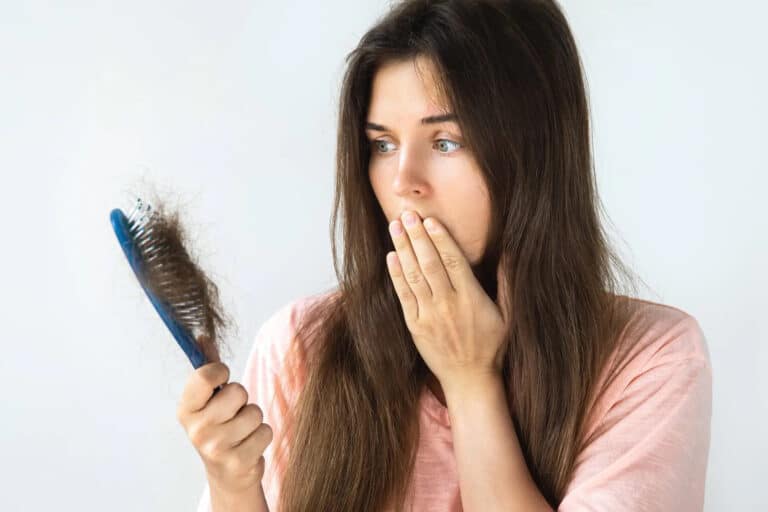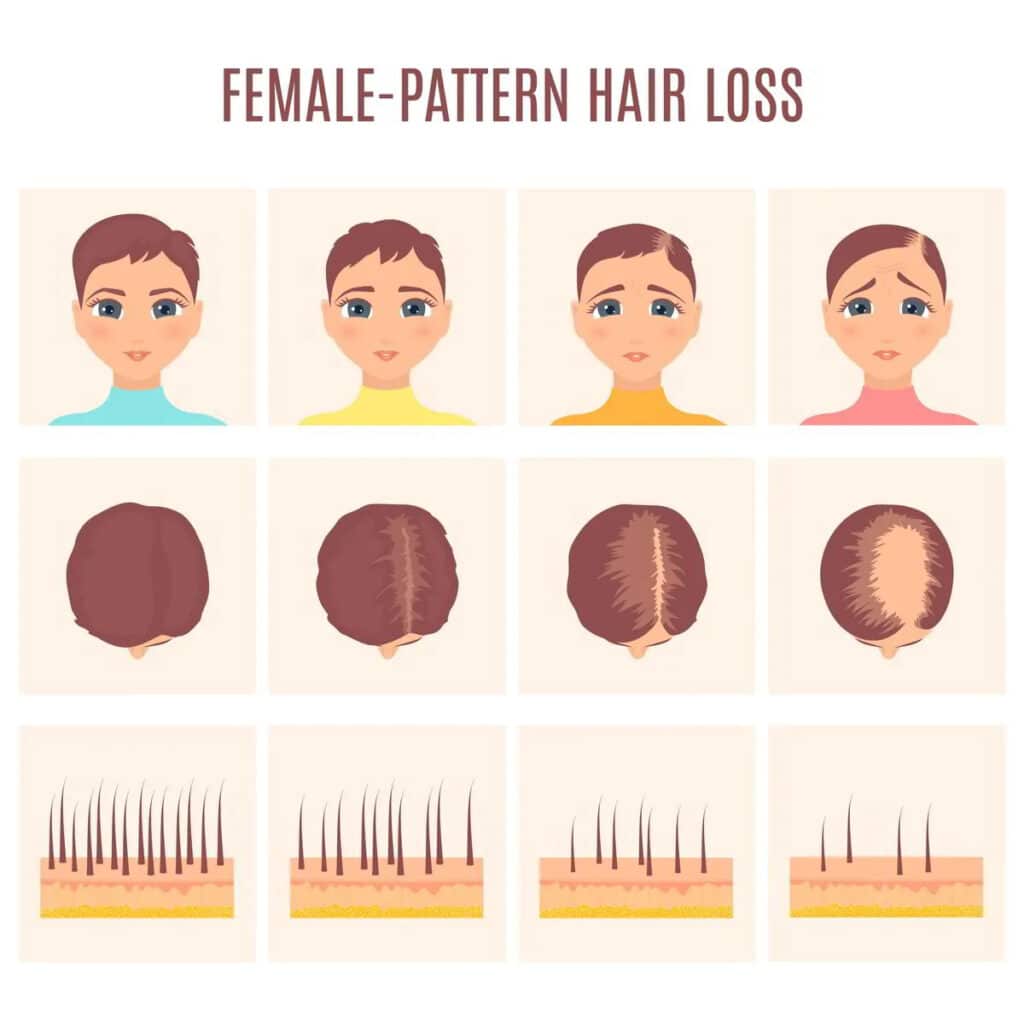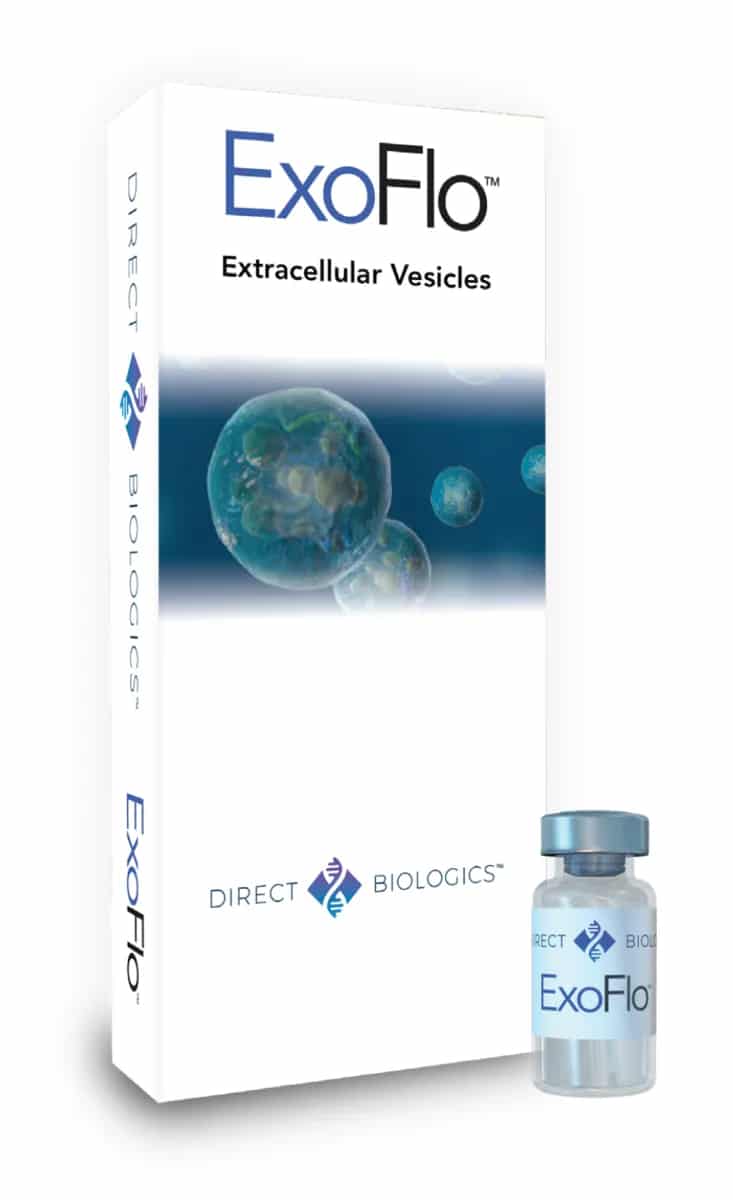How Does Hair Loss Affect People?
Hair plays an important role in identity, self-perception, and psychosocial functioning.
Hair loss can be discouraging. For many, it decreases self-esteem and feelings of personal attractiveness. It can eat away at one’s self-confidence.
Hair loss causes some to appear older than their actual age. Some even report increased feelings of depression and social anxiety.

What is Androgenetic Alopecia?
Androgenetic alopecia (AGA) is the most frequent form of hair loss. It affects 80% of men and 50% of women throughout their lifetime.
Androgenetic alopecia is characterized by a progressive reduction in the diameter, length, and number of hairs.
There is progressive miniaturization of the hair follicle. This leads to the gradual conversion of our normal hair (terminal hair) to a soft, short, fuzzy type of hair. This is known as “vellus hair.”
In addition to hair miniaturization, there is also a progressive reduction in hair density with androgenetic alopecia as well.
The hair loss of androgenetic alopecia typically starts at the front of the hairline and moves backwards.
In both men and women, the severity of patterned hair loss increases with age. However, the onset of hair loss may occur at any age following puberty.

Why Do Only Some Men Have Androgenetic Alopecia?
The cause is a blend of genetics, hormones, and sometimes medical problems.
Genetics play an important role in male pattern hair loss:
A hair loss study was performed on 900 male twins between the ages of 25 and 36. Hair loss was found to be due to genetic factors in 80% of these patients.
The real culprit for hair loss in men is the hormone dihydrotestosterone (DHT):
DHT binds to androgen receptors. Androgen receptors are located on the cell surface of hair follicle cells.
The binding of DHT to the androgen receptor promotes the process of hair miniaturization. In this process, large, terminal hair follicles are transformed into smaller, weaker hair follicles with a shorter growth phase.
Men with androgenetic alopecia have higher levels of DHT and increased numbers of androgen receptors on their hair follicles. This is why some men have androgenetic alopecia and others don’t.
Disease and illness can also lead to male pattern baldness:
Prostate enlargement, prostate cancer, diabetes, obesity, heart disease, and high blood pressure can all increase androgenetic alopecia.

What About Hair Loss in Women?
The cause of hair loss in women is not clearly understood. The exact role of genetics and hormones in women who suffer from hair loss is unknown. For this reason, hair loss in women is referred to as “female pattern hair loss” instead of “androgenetic alopecia.”
Women whose bodies produce excess androgens due to a disease process are at increased risk of female pattern hair loss. Polycystic ovary syndrome (PCOS) is one of these diseases. It’s important for women with hair loss to have their androgen levels measured to rule out one of these conditions. .
How Effective Are Current Medications for Hair Loss in Men and Women?
There are only a few medications that help improve hair growth. They are not effective in everyone. Additionally, the beneficial effect of these medications ends when their use is discontinued.
The common oral medication for hair loss (finasteride) is associated with difficult and unwanted side effects. These are:
- decreased libido
- sexual dysfunction
- mood disorders
- possible birth defects
- and others.
Due to these side effects, only 30% of hair loss patients continue this medication for more than one year. Most patients with hair loss desire therapies with less problematic side effects.

What About Topical Medications for Hair Loss?
Minoxidil (also known as Rogaine) is a topical medication used to treat hair loss in men and women. Applying minoxidil directly to the scalp can stimulate hair growth. There is a 2% over-the-counter formulation and a 5% solution that requires a prescription.
Hair loss can be discouraging. For many, it decreases self-esteem and feelings of personal attractiveness. It can eat away at one’s self-confidence.
Hair loss causes some to appear older than their actual age. Some even report increased feelings of depression and social anxiety.
Minoxidil is not a miracle drug. It can produce new growth of fine hair, but it can’t restore the full density of the lost hair. It only works in some patients.
Minoxidil is not a quick fix for hair loss in women or men. It takes at least two months to begin to see results. The effect often peaks at around four months, but it may take longer. To know if Minoxidil works for you, a trial of six to 12 months is required. If it does work for you, you’ll need to continue using it to maintain the results. When you stop, your hair loss will return.
What Other Treatments are Available for Hair Loss Today?
Fortunately, there are several therapeutic options available for the treatment of hair loss in men and women.
New therapies, like concentrated platelet (PRP) injections, low-level laser therapy (LLLT), and nutraceuticals are emerging with promising results.


What Is the Newest Technology Related to Hair Restoration?
Extracellular vesicles derived from bone marrow Mesenchymal Stem Cells (MSC) are the new frontier of regenerative medicine. They are currently being studied in patients with hair loss. Treatment with extracellular vesicles has been demonstrated to be safe. ExoFlo, an extracellular vesicle product has been administered intravenously without any complications or adverse effects. This offers hope for those with hair loss.
Shea Aesthetic Clinic Offers Treatment with ExoFlo.
The extracellular product used at Shea Aesthetic Clinic is ExoFlo. ExoFlo is the brand name for purified extracellular vesicles.
What Is It Like to Be Treated with ExoFlo?
Treatment with ExoFlo is simple.
The extracellular vesicles are mixed into a mild salt-water solution. The scalp is numbed, and the solution is injected into the scalp in the areas with thinning hair. After ExoFlo injection is complete, microneedling over the scalp is performed.
The procedure takes about two hours, and there is no downtime.
Your in-office ExoFlo treatment is done during one visit. You will follow up in our office to assess your progress every 1-3 months.
Your at-home regimen consists of low-level laser light therapy (Theradome® cap) at least twice weekly, daily topical medication (Minoxidil), as well as daily topical and nutritional supplements (VotesseTM).
Can ExoFlo be used in Men and Women?
Yes.
Is Treatment with ExoFlo Safe?
Yes, ExoFlo has been verified as safe by the FDA.
In fact, the FDA has determined that ExoFlo treatment carries no risk of rejection or hyperinflammatory (allergic) responses.
In a recent study, ExoFlo was administered IV to patients with respiratory failure from COVID-19. These patients required mechanical ventilation due to the severity of their disease. Most patients in this condition do not survive. In this study, 83% of the patients treated with ExoFlo did survive. ExoFlo appeared to help repair the damaged lung tissues. Click here to learn more about this study.
Though its use in humans for various medical conditions is currently going through the FDA approval process, ExoFlo is not yet FDA approved.
Are There Any Side Effects of Treatment with ExoFlo?
To date, no complications have been reported with ExoFlo injections.
The procedure requires multiple scalp injections which are somewhat painful. However, the scalp is numbed prior to the procedure. Patients report that it is very tolerable.
For 1-2 days after the procedure, patients typically feel like they have a mild sunburn on the scalp.
Who Can be Treated with ExoFlo?
The use of ExoFlo is currently being studied in women with female pattern hair loss and men with androgenetic alopecia.
This kind of hair loss affects up to 50% of women and 80% of men throughout their lifetime.
The ideal people for injection procedures are those who are in the process of losing their hair.
Injection procedures for hair loss work best in patients that still have hair follicles present. This holds true even if the hairs are thin and wispy.
Good Candidates for Injection Procedures are People that:
- Have female pattern baldness
- Have thinning or receding hair
- Do not qualify for a hair transplant procedure
- Are not interested in receiving a hair transplant
- Have recently received a PRP treatment for hair loss
- Have male pattern baldness or androgenetic alopecia
What is the Research Showing About Who Should Not be Treated with ExoFlo?
ExoFlo treatment has not been shown to be helpful in autoimmune hair loss. It is not meant to treat scarring alopecia or inflammatory alopecia.
ExoFlo is not ideal for those that have been bald for years and have smooth, shiny skin on their scalp (no hair follicles).
Combination Treatment for Hair Restoration
The ideal treatment for hair restoration is a combination of therapies that each help stimulate hair regrowth by different mechanisms.
The hair restoration experts at Shea Aesthetic Clinic recommend the following treatments in addition to injection treatments to maximize your results:
- Votesse™ A comprehensive, two-part hair health system for men & women composed of an oral nutraceutical and a topical hair health system. Votesse™ contains antioxidants, multi-vitamins, and probiotics that address the wellness of the scalp from the inside out.
- Theradome® cap to provide low-level laser therapy (LLLT). The cap is used at least twice a week for 20 minutes in the comfort of your home. The skin can absorb light energy from the sun and turn it into vitamin D. Similarly, the Theradome® laser light energy is absorbed into the base of the hair follicle. This energy prolongs the growth phase and shortens the resting and shedding phases of the hair follicle. This process halts hair loss and accelerates the birth of new, healthy hair follicles. The result is fuller, thicker, more lustrous, and manageable hair.
- Minoxidil treatment is applied to the scalp twice daily.
How Long is the Recovery Period After Injection Treatments?
Patients can wash their hair 24 hours after treatment and go back to their normal routines the next day.
Is There Any Special Preparation that Needs to be Done Prior to the Procedure?
Anti-inflammatories can inhibit the effect of the treatment. So, patients must avoid the use of anti-inflammatories for 5 days before the procedure (and for 5 days afterwards too).
What is the Cost of Theradome for Hair Restoration?
The cost of the Theradome PRO Laser Hair Growth Helmet LH80 is $895. There is a discount offered when the Theradome helmet is purchased as part of a hair restoration plan at Shea.

Where Do Extracellular Vesicles Come From?
Extracellular vesicles come from bone marrow mesenchymal stem cells.

Are Extracellular Vesicles Cells?
No. Extracellular vesicles are tiny packages within our cells. They are present in blood, urine, and tissue fluid.
Extracellular Vesicles Are Not Cells
- Extracellular vesicles exit cells and move into tissues, blood, and urine
- They do not contain DNA, mitochondria, or other cellular organelles
- They are involved in communication between cells
- They are 1,000th the size of a typical cell
What Signaling Proteins do the Extracellular Vesicles in ExoFlo Deliver?
Extracellular Vesicles contain more than 1,000 signaling proteins:
- Anti-tumor signals
- Anti-inflammatory proteins
- Signals that inhibit cell death
- Regenerative and healing signals
- Blood vessel growth stimulating factors
The Messenger RNA (mRNA) in Extracellular Vesicles Turn ON the Following:
- Regenerative mechanisms
- Anti-inflammatory pathways
- Blood vessel growth factors
- Many more…
The Micro RNA (miRNA) in Extracellular Vesicles Turn OFF the following:
- Chronic inflammatory pathways
- Enzymes that catabolize (destroy/break down) tissues
- Many more…
Extracellular vesicles and their effect on reviving hair follicles and regenerating hair growth are being studied by many physicians in the US.


